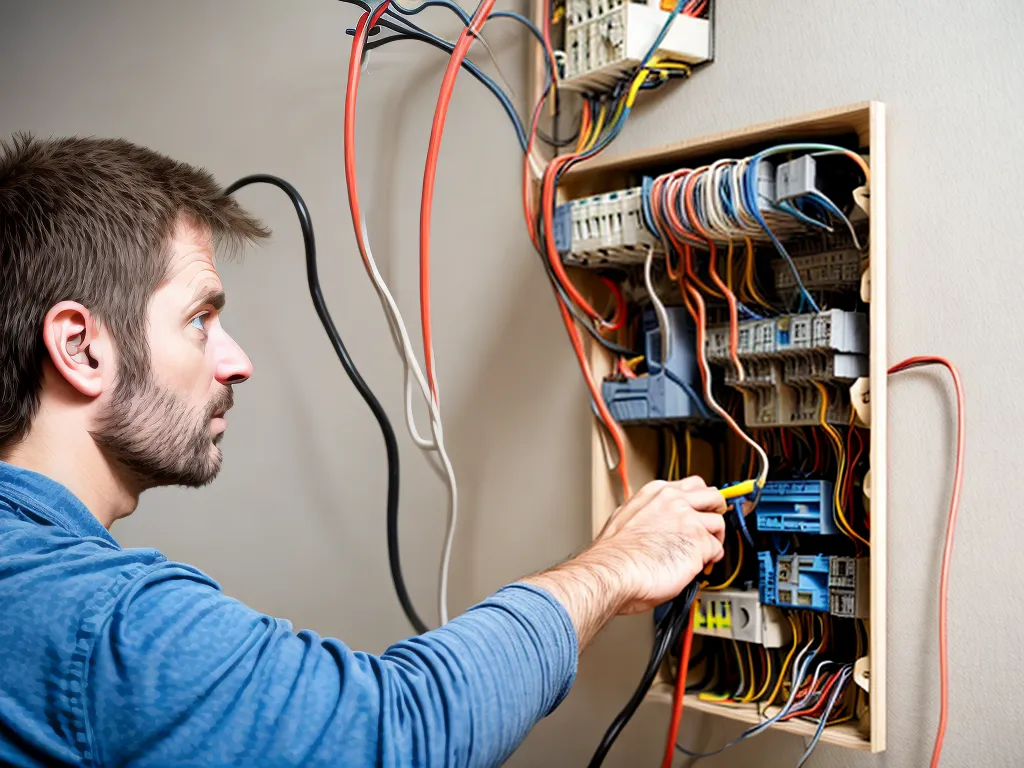
How to Rewire Your Home Without an Electrician
Assess Your Electrical Needs
Before I attempt any electrical work, I first take stock of what needs to be rewired in my home. I walk through each room and make note of outlets, light fixtures, appliances, etc. that may need upgrades or repairs. This allows me to fully grasp the scope of the project so I can plan accordingly. I also check the electrical panel to see how much capacity I'm working with. Knowing the amperage of the circuits and panel size is crucial for planning new wiring.
Learn Electrical Safety
Electrical work can be extremely dangerous if proper precautions aren't taken. Before touching any wires, I make sure to turn off the power at the main circuit breaker panel. I also test wires with a non-contact voltage tester to confirm power is off. I never work on live wires! Additionally, I wear insulated gloves and other protective equipment when handling any wiring. I educate myself on electrical safety best practices so I can avoid hazards like electrocution, arc flashes, and shocks. Safety is paramount - I never cut corners when it comes to protecting myself.
Gather the Right Tools
Rewiring a home requires an assortment of specialized tools. I make sure to have wire strippers, combination pliers, a volt meter, wire nuts, electrical tape, a fish tape, and conduit available. A step ladder and flashlight are also essential for gaining access to fixtures and seeing inside junction boxes. I take inventory of my tool collection and pick up anything I'm missing before getting started. My local hardware store has a section dedicated to electrical supplies and tools. Investing in professional-grade equipment allows me to complete my electrical projects safely and correctly.
Understand Electrical Code Requirements
All electrical work must follow local building codes and the National Electrical Code (NEC). I consult my local building department to obtain permits and learn about specific requirements in my area. Common codes include minimum wire gauge for circuits, number of outlets per room, and required GFCI and AFCI outlets. I study the NEC handbook so I understand important rules like proper wire splicing, grounding, and overcurrent protection. Strict adherence to electrical codes ensures my DIY rewiring meets all safety regulations. I don't cut corners when it comes to codes!
Replace Outlets and Switches
One of the most straightforward DIY electrical jobs is upgrading outlets and switches. I start by turning off the power and verifying it's off with a voltage tester. I remove the old outlet/switch and disconnect the wires. I make note of where each wire is connected. I connect the wires to the new outlet/switch in the same configuration using wire nuts. Finally I mount the new outlet/switch into the box and secure it with screws. Replacing lighting fixtures follows the same process. I make sure not to overload circuits by checking wattage ratings. A simple parts swap boosts safety and aesthetics.
Add New Circuits
When I need to add new electrical circuits, I turn off the main breaker and disconnect wires from the panel one circuit at a time. I map out where I want the new circuit to run and use a fish tape to pull Romex wiring through walls and ceilings. I staple the cable every few feet for support. At the panel, I connect the cable to a new circuit breaker sized for the circuit's amperage rating. I label the wire and breaker appropriately. Finally, I install new outlets, switches and fixtures to the new home run wiring according to codes. With proper planning, I can upgrade my electrical service to add capacity for new appliances and devices.
Inspect and Test My Work
Once the new wiring is installed, I thoroughly inspect each connection point, junction box and termination. I tug on wires to ensure they are securely fastened and double check my work against wiring diagrams. I replace all covers on boxes and panels. Before restoring power, I test all my circuits with a multimeter to confirm correct connections. I also have my work inspected by the local building department as an added safety measure. Only after passing these checks do I turn the main breaker back on. Careful inspection and testing verifies my DIY electrical work was completed properly and safely.
Hire a Professional When Needed
Although many electrical projects can be DIY'ed, some complex or hazardous tasks require a licensed electrician. I only take on jobs within my skill level like installing fixtures, adding outlets and running new circuits with existing voltage. Rewiring an old home from scratch, upgrading the service panel or wiring a hot tub require pro expertise. I also call an electrician immediately if I uncover any unsafe or illegal existing wiring while renovating. The health and safety risks involved with faulty electrical work make hiring a professional critical in those scenarios. I let go of my pride and hire electricians for major upgrades or repairs beyond my abilities.
Safely Upgrade Your Electrical System
With research, vigilance and common sense, homeowners can safely rewire their home. But electricity is unforgiving if mistakes are made. I take electrical work slowly and methodically. I educate myself thoroughly on codes and best practices before touching a wire. I use extreme caution and wear protective equipment at all times when handling electricity. My home's electrical system powers my very livelihood, so I hire pros when I'm unsure about any aspect of the job. By understanding my limits, I can successfully rewire my home and enlighten my spaces with safe, modern electricity.